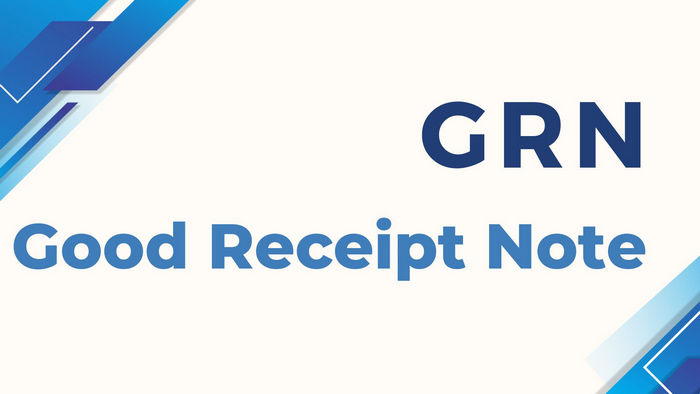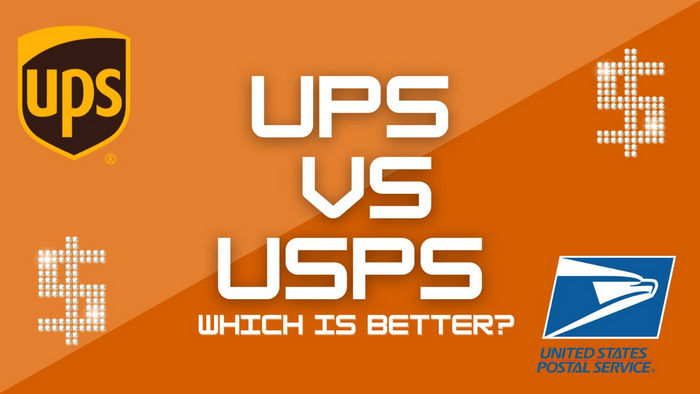Table of Content
-
#3 Five Types Of Must-have Order Management Tools
- 3.1 Shipping Software/API
- 3.1.1 Shipping Software
- 3.1.2 Shipping API
- 3.2 Order Fulfillment Software
- 3.2.1 WMS
- 3.2.2 ERP
- 3.2.3 SCM
- 3.3 Third-party Logistics(3PL) Service
- 3.3.1 Standard 3PL Providers
- 3.3.2 3PL Service Developers
- 3.3.3 3PL Customer Adapters
- 3.3.4 3PL Customer Developers
- 3.1 Shipping Software/API
-
-
- 4.1.1 Product Return Rate
- 4.1.2 Package Loss Rate
- 4.1.3 Average Delivery Days
- 4.1.4 Average Shipping Cost Per Product
-
4.2 Customer Experience Analysis
- 4.2.1 Shipping Satisfaction Score
- 4.2.2 Total Number of Customer Support
- 4.2.3 Tickets Types of Customer Support Tickets
-
- 4.3.1 More Shipping Options vs Few Shipping Options
- 4.3.2 Free Shipping vs Paid Shipping
-
- #5 Shipping Is Challenging For Any Ecommerce Business
1. Why Can Shipping Services Increase Sales?
Shipping cost is one of the basic and critical costs in the eCommerce business. Suppose you need to pay $20 for shipping to make a $40 sale, and you want to lower the cost. Either you reduce the shipping cost or increase the average order value.
Let's go through these two aspects to see how to implement these tactics to increase sales and reduce costs simultaneously.
Shipping Options
More shipping options mean a higher chance of selling more products. It is easy to understand the logic behind this study. When you need a product sent to you the next day, but the retailer only provides three days delivery, will you buy the product from this store?
Thus, more shipping options can reduce shopping cart abandonment and attract customers from competitors with fewer shipping options. There is many shipping software/API for multiple shipping carrier integration. Session five explains the features, benefits, and integration difficulty. It can help you find a suitable tool for your eCommerce business.
Order Tracking
Order tracking is the most engaged process after purchasing. Most retailers often overlook the sales that order tracking brings. It is common to send a confirmed email to your customers with the carrier tracking number. In this case, you send a lot of visitors to the carrier's website, but why don't you keep this large amount of traffic in your store?
The new practice is sending a branded shipment tracking page to your customer. In this way, the customers will go to your store to track and trace the orders. A study shows that returning customers have a higher average order value than the first-time buyer. You have more opportunities to promote more products to them.
Most shipping software/API provides such a feature. When doing software partner research, don't forget to ask if they have a branded tracking page feature.
2. How To Reduce Shipping Costs?
There are plenty of ways to lower the logistics costs but not all suits your business. The following three most straightforward ways can instantly help any eCommerce business reduce shipping costs.
Shipping Rate Discounts
Getting a shipping rate discount is the fastest and easiest way to reduce your shipping cost when your shipments meet the minimum package amount.
Using shipping software/API to obtain a basic discount or even a big discount will be more suitable for small eCommerce businesses.
This eCommerce tool receives special discounts from the carrier based on the number of customers. The more customers, the more discounts they get.
Package Size and Weight
Usually, the carrier will charge you for the actual or dimensional weight of the package. The greater one is the shipping cost.
For example, you want to ship a 2-pound piggy bank. To ensure it arrives in good condition, if you pack it in a 12" x12" x12" box, then you will need to pay for a 13-pound package because the carrier will charge you for the highest of the actual or DIM weight.
The first step is to find the right packing materials. For such a reason, you need better control the weight and shape of the package. You can read 6 Types of Boxes & Uses - Boxed Packaged Goods Guides 2021 to determine which packaging material is suitable for your products.
The second step is to find a reliable packaging material supplier. The more you purchase, the lower price. You can buy shipping materials from Vietnam, China, India with other retailers. Or make the order on a B2B sourcing platform like Aliexpress.
Shipping Address Validation
Address verification is vital in the shipping process. Some customers will use the wrong recipient's information. When the last-mile delivery fails due to the incorrect address, you are the one that bears the loss.
In a nutshell, address validation can save you money in the following ways. It helps you obtain maximum postal savings from the carrier, ensure that communications reach customers accurately and on time.
3. Five Types Of Must-have Order Management Tools
3.1 Shipping Software/API
The difference between shipping software and shipping API is that you can use shipping software without writing code. Shipping software is more suitable for merchants without programming skills, while shipping API is designed for developers.
3.1.1 Shipping Software
What Is Shipping Software? Shipping Software is a simplified shipping management tool. It has all the features that the shipping API has. Besides, some shipping software provides other features that shipping API doesn't have.
There are eight main features of shipping software:
-
● Shipping Rate Comparison
-
● Branded Shipment Tracking Page
-
● Shipping Label Creation
-
● Shipping Data Analysis
-
● Shipping Rate Calculator
-
● Shipping Rate Discounts
-
● Custom Declaration
-
● Multiple Carrier Shipping Options
With these features, you can efficiently manage your shipment, reduce costs and increase sales. Those are the three key benefits of shipping software.
3.1.2 Shipping API
What Is Shipping API? Shipping API stands for Application Programming Interface for managing shipping-related businesses. The use of shipping API is the same as other APIs. You will need programming knowledge to use the shipping API.
Shipping API has eight key features:
-
● Label Creation
-
● Real-time Shipment Tracking
-
● Address Validation
-
● Shipping Manifests Creation
-
● Voids & Returns
-
● Multiple Carrier Shipping Options
-
● Shipping Rate Discounts
The shipping API features are similar to shipping software, but shipping API is more suitable for people with coding knowledge. A good shipping API usually has a simple interface with minimal disruption to your existing business flow.
3.2 Order Fulfillment Software
What is Order Fulfillment Software? OFS(Order Fulfillment Software) is automated inventory management software. It can help you automate picking list creation, packing, order shipping, and shipment tracking.
WMS, ERP, and SCM are three common types of order fulfillment tools.
3.2.1 WMS
A warehouse management system (WMS) can help businesses understand how their inventory management and supply chain fulfillment operations work. Most importantly, you can find and solve the problems with WMS.
There are eight features of a warehouse management system
-
● Warehouse Design
-
● Inventory Tracking
-
● Order Processing
-
● Picking and Packing
-
● Shipping and Tracking
-
● Labor Management
-
● Yard and Dock Management
-
● Reporting
These main features can help you optimize the receiving and put-away process, labor allocation, inventory costs, and security. Most businesses that use WMS can improve their relationships with suppliers and customers.
3.2.2 ERP
ERP(Enterprise Resource Planning) is not exactly an order fulfillment software, but you can use ERP to manage day-to-day business activities with other order fulfillment software.
After integrating ERP with order fulfillment software, you can manage your daily activities such as accounting, financial management, customer relationship, sales, procurement, marketing, and manufacturing.
The point of integrating ERP with an order fulfillment system is that you can understand how much it costs to fulfill an order and what the efficiency and cost problems are.
3.2.3 SCM
Supply chain management handles the entire production flow of a good or service. It starts from the raw components to delivering the final product. A company creates a network of suppliers ("links" in the chain) that move the product from the raw materials suppliers to those organizations that deal directly with users.
The essential features of an effective supply chain management solution can help you improve the whole supply chain management. Your collaboration with your supplier and partner will be more efficient. Demand forecasting will be more accurate than before.
Better collaboration with your suppliers and partners is the main reason to use the SCM system. After taking the SCM solution, you can expect to see good results on quality control, efficiency rate, shipping, overhead costs, risk mitigation, and cash flow.
3.3 Third-party Logistics(3PL) Service
Third-party logistics(3PL) service outsources its distribution, warehousing, and fulfillment to third-party businesses, but you should understand these four types of 3PL services before choosing a 3PL provider.
3.3.1 Standard 3PL Providers
Small eCommerce retailers with the most basic logistics needs would work with a standard 3PL company. These companies offer the simplest services such as storage and product shipping. This service cost is usually low because it doesn't include many complex operations.
3.3.2 3PL Service Developers
In addition to product storage and order shipping, 3PL service developers offer more value-added services such as customs declaration shipment tracking and compliance management.
They may also offer package selection and cross-docking (unloading materials from an incoming truck and loading them onto an outbound truck, with little to no storage necessary).
3.3.3 3PL Customer Adapters
3PL Customer Adapters handles nearly all the logistics activities for their client, managing the shipping process from beginning to end. Some of them also provide shipping rate discounts.
In addition to the services provided by 3PL Service Developers, 3PL Customer Adapters offer more customization services for their clients.
3.3.4 3PL Customer Developers
Working with a 3PL customer developer is the most costly option. A 3PL Customer Developer manages a company's logistics activities at their client's request. Their responsibility starts from the moment they receive the client's request to the delivery sign-off.
4. Shipping Data Analysis
Data analysis is important to all businesses to understand their problems and whether their effort pays off. That's why you need to look at the following 9 shipping solution analysis metrics after taking measures.
4.1 Shipping Process Analysis
4.1.1 Product Return Rate
The average eCommerce product return rate is around 20-30%. If you can lower the product return rate to less than 20%, it is a great accomplishment for you.
The return rate formula: (the total units returned divides the sum of units sold, and then multiplies the figure by 100) This formula needs to be used in a specific timeframe.
For example, you sold 800 phones in July, then 100 of them returned to your store in August. The product return rate in July will be 100/800*100=12.5%.
This metric is for you to understand why customers turn the product. Is the order fulfillment not accurate? Is the package damaged during shipping? Once you receive the returned products, it is better to count and categorize them and then use the formula above to understand the primary reason your product return rate goes up.
4.1.2 Package Loss Rate
A lost package is a lost sale. The package loss rate varies from carrier to carrier. The reason to have the data is to filter out the carrier with a high loss rate.
The package loss rate formula: ( the total shipped products divide the total lost products, and then multiply the figure by 100) This formula needs to be used in a specific timeframe.
For example, you sold 1000 laptops in may and have them shipped by a carrier, 10 of them get lost during shipping. The package loss rate of this carrier is 1%(10/1000*100).
4.1.3 Average Delivery Days
Many reasons affect the average delivery days, such as carrier, shipping services, routes, weather, etc. To do this calculation is to attract more customers better. You can show the shipping estimation on every product page to show your advantages if you have a more efficient shipping service than your competitors.
The average delivery days = (Total days a carrier takes to deliver all orders divide the total number of orders it delivered successfully)
4.1.4 Average Shipping Cost Per Product
Shipping cost is the major cost of the entire shipping process. The larger the products you sell, the more your SKUs sell, the higher the shipping cost.
One way to lower this cost is using shipping rate discounts. Compare the pricing quote across different carriers to see who can provide the best price possible.
4.2 Customer Experience Analysis
4.2.1 Shipping Satisfaction Score
Over 60% of online store's revenue comes from repeat customers. An awful shipping experience will drive people away. In contrast, a good shipping experience can help increase returning customers and attract new customers.
After adopting new shipping solutions, you can see how the result impacts your costs by Shipping Process Analysis and how your customers feel about your new solutions by Shipping Satisfaction Score.
You can ask the question: "Are you satisfied with your shopping experience? Please rate your experience from 1-5 with 1 being terrible and 5 being excellent."
The data will tell you whether you should change to a new shipping carrier.
4.2.2 Total Number of Customer Support
You can expect a decline in logistics tracking questions after adding a self package tracking feature on your store or in your automation system.
When shipping-related questions drop, your customer support team will have more time to focus on vital problems. For example, helping customers find the products they need and guiding customers to make a purchase decision they will not regret.
4.2.3 Tickets Types of Customer Support Tickets
The categories of customer support tickets will differ depending on the type of products you sell. However, no matter how you categorize the questions, it's important that you have a solution for each problem.
Here are some examples of categories:
-
● Technical Issue
-
● Refund & Exchange
-
● Discount & Promotion
-
● Shipping
-
● Product Availability
Whether your new shipping solution works will reflect the number of tickets.
4.3 Shipping Analytics
4.3.1 More Shipping Options vs Few Shipping Options
Research shows 86% of the respondents said that they'd seen an increase in sales as a result of offering more shipping options.
Offering more shipping options has two meanings. One shipping method is to provide more carriers. The other one is offering more shipping services from a few carriers. Thus, when you find out that providing more services from one carrier can't increase sales, you probably need to add more shipping carriers.
4.3.2 Free Shipping vs Paid Shipping
Free shipping is one of the most powerful methods to increase sales. Usually, the common practice is to increase product prices to cover all or partial costs for shipping or pay the shipping fee your own.
You can offer free shipping for some products to test whether the shipping cost will influence the customer's final purchasing decision. Once you spot that free shipping doesn't hurt your profits, you can expand the free shipping option to other products.
Shipping Is Challenging For Any Ecommerce Business
There is no one-size-fits-all eCommerce shipping strategy that you can copy from other online sellers because each has unique challenges.
Fortunately, the essential challenges every eCommerce business faces are the same. The most cost-efficient eCommerce strategy to overcome your shipping difficulties is to spot the problems first.
Understanding the aspects that prevent you from achieving your goal can help you quickly locate the root problem. For example, if you feel that your current shipping costs are high, you can use shipping software to get shipping rate discounts from various carriers. If you want to lower the shipping cost further, then use the packaging materials right to reduce the shipping weight or purchase the packaging materials at the best possible price.
Once you develop your eCommerce shipping solution, don't forget to evaluate the results. Data analysis is necessary for this part. You can evaluate your shipping and sales strategy every 6 months or 12 months to see if you can further balance the cost and sales.
More Tips for You
8 Tips For How to Improve Warehouse Efficiency
Ecommerce Packaging Tips for Product & Shipping Package
Ultimate Guide : Local & Cross-border eCommerce Logistics Service




